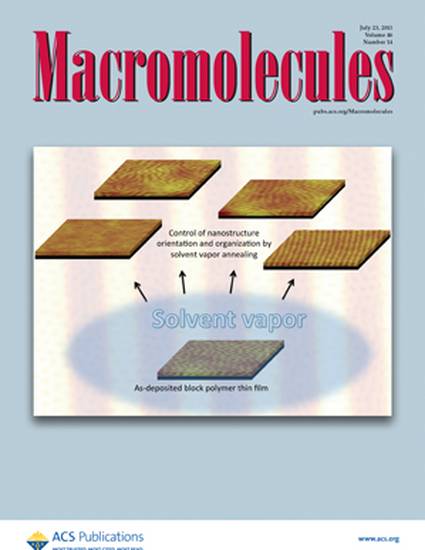
Article
Computationally Linking Molecular Features of Conjugated Polymers and Fullerene Derivatives to Bulk Heterojunction Morphology
Macromolecules
(2013)
Abstract
The efficiency of bulk heterojunction solar cells depends strongly on the morphology of the electron donors (conjugated polymers) and electron acceptors (fullerene derivatives) in the active layer. The features of the donor–acceptor morphology (e.g., domain shapes, crystalline/amorphous domains, and donor–acceptor interface) can in principle be tuned by choosing the chemistry and architecture of the conjugated polymer, fullerene functional group, solvents, and processing conditions (e.g., annealing temperature). Here, we present a high-throughput coarse-grained simulation study that links molecular-level design parameters to features in the assembled morphology in neat polymers and donor–acceptor blends. These models reproduce neat polymer morphologies observed in experiments, such as lamellae, hexagonally packed cylinders, and acceptor intercalation among donor side chains. Furthermore, for blends of conjugated polymers and fullerene derivatives, this study shows how conjugated polymer architecture and acceptor miscibility can be tailored to obtain new blend morphologies, which have features that are known to be optimal for higher efficiency solar cells.
Disciplines
Publication Date
July 23, 2013
Citation Information
Eric Jankowski, Hilary S. Marsh and Arthi Jayaraman. "Computationally Linking Molecular Features of Conjugated Polymers and Fullerene Derivatives to Bulk Heterojunction Morphology" Macromolecules Vol. 46 Iss. 14 (2013) Available at: http://works.bepress.com/eric_jankowski/11/
